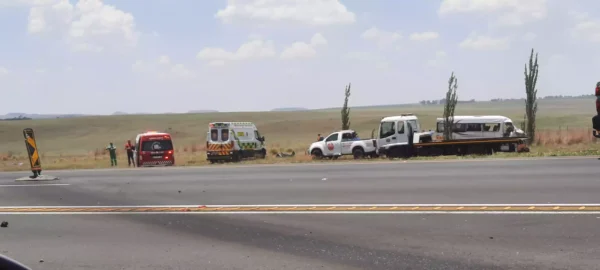
Rear-end collisions like this make up less than 4% of Easter weekend collisions.

It is that time of the year again, when wise truck drivers stay off the roads to make way for Easter’s annual wave of impatient holidaymakers rushing to their deaths.
Analysis of the yearly death toll on South Africa’s roads by the Road Traffic Management Corporation (RTMC) shows that the Easter weekend, from Thursday night to Sunday, is the most dangerous time to be on the road.
During 2023 Easter fatal crashes increased from 36 on Thursday to 55 on Saturday and started to go down by Sunday. This is a similar pattern to Easter 2022, when fatal crashes increase from Thursday to Sunday.
Just under one in three (32%) fatal crashes happened between 17h00 and 21h00 during the 2023 Easter period with 5PM and 8PM seeing the most crashes last year.

Main causes of crashes
Amateur drivers in passenger cars and bakkies cause most of the crashes. Passenger cars contributed 32% in 2022 and 40% in 2023. Bakkies remained at 15%.
By comparison, trucks are involved in less than 4% of fatal crashes during Easter and taxi drivers less than 8%.
The RTMC’s analysis of crashes shows that faulty brakes and tyre bursts – typically from being under-inflated – contributed the most to fatal crashes in the vehicle factors category. In the preceding Easter 2022, the highest contributors to fatal crashes in passenger vehicles were smooth tyres and tyre bursts.
The top three crash types over the Easter period have been
- hit and run,
- accidents with pedestrians and
- single vehicle overturns.
Pedestrians most at risk
The amateur drivers are not solely to blame, however, as jay-walking or drunk pedestrians still die the most in vehicle collisions.
In 2023 hit and runs and accidents with pedestrians contributed 48% of fatal crashes, a slight increase on the 46% from Easter 2022.
Hit-and-Run and jay-walking were the highest contributors to fatal crashes at 29% and 26% in 2022. In 2023 the highest contributors to fatal crashes on human factors were over speeding for circumstances at 22% and hit-and-runs at 21%.
Roads with highest risks
Drivers run the highest risk of running over pedestrians in built-up rural areas.
The Eastern Cape remains the most dangerous province to drive in, with the N2 section between Mthatha and Butterworth; the N2 section between Kokstad and Mount Frere and the R61 section between Kokstad and Port Edward showing the highest numbers of deaths.
The R573 “Moloto Road” from Pretoria to KwaMhlanga, however, remains the single most dangerous stretch of road with the highest number of fatalities in South Africa.
The roads with the most crashes in South Africa in 2023:
1 and 2: N2 East London to Mthatha to Kokstad
3 and 4: N1 Mokopane to Polokwane to Makhado
5: N4 Middelburg to Belfast
6: N2 Durban to Tongaat
7: N12 Springs to eMalahleni
8: R573 “Moloto Road” from Pretoria to KwaMhlang
9: N1 Naboomspruit to Mokopan
10: R71 Polokwane to Tzaneen





